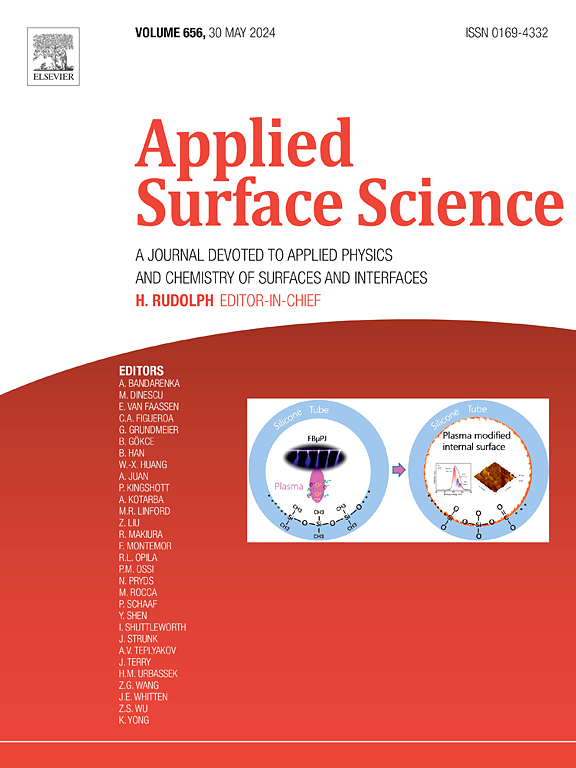In-situ constructed MoOx-TiO2 interfaces with abundant oxygen vacancies for noble metal-free and high-efficiency reverse water-gas shift reaction
IF 6.3
2区 材料科学
Q2 CHEMISTRY, PHYSICAL
引用次数: 0
Abstract
Interfacial modulation of transition metal oxide composites without noble metal is of great importance for CO2 hydrogenation catalytic efficiency. Herein, we propose a heterogeneous interface engineering strategy to prepare the MoOx-TiO2 heterojunction catalyst with enhanced oxygen vacancy (OV), which shows outstanding catalytic performance in the reverse water–gas shift (RWGS) reaction. MoO3-TiO2 heterojunction precursor is constructed by an in-situ solvent-thermal method. The electron transfer from TiO2 to MoO3 promotes the reduction of MoO3, contributing to the formation of the MoOx-TiO2 heterojunction interface rich in OV and then facilitating the adsorption and activation of CO2. The catalyst shows excellent catalytic activity with a CO yield of 452.6 mmol g−1 h−1 at 400 °C. This performance is significantly improved over that of the MoOx catalyst and superior to many reported Mo-based non-noble metal catalyst systems. In this study, the effective modulation of OV of transition-metal oxides is realized by heterojunction engineering, which provides a new design paradigm for the development of high-efficiency CO2 conversion catalysts.

原位构建具有丰富氧空位的MoOx-TiO2界面,用于无贵金属、高效的逆水气移位反应
不含贵金属的过渡金属氧化物复合材料的界面调制对CO2加氢催化效率具有重要意义。在此,我们提出了一种异相界面工程策略来制备具有增强氧空位(OV)的MoOx-TiO2异相结催化剂,该催化剂在逆向水气转换(RWGS)反应中表现出优异的催化性能。采用原位溶剂热法制备了MoO3-TiO2异质结前驱体。TiO2向MoO3的电子转移促进了MoO3的还原,形成了富含OV的MoOx-TiO2异质结界面,从而促进了CO2的吸附和活化。该催化剂在400 ℃时CO产率为452.6 mmol g−1 h−1,具有良好的催化活性。与MoOx催化剂相比,这一性能得到了显著提高,优于许多已报道的钼基非贵金属催化剂体系。本研究通过异质结工程实现了过渡金属氧化物OV的有效调制,为开发高效的CO2转化催化剂提供了新的设计范式。
本文章由计算机程序翻译,如有差异,请以英文原文为准。
求助全文
约1分钟内获得全文
求助全文
来源期刊

Applied Surface Science
工程技术-材料科学:膜
CiteScore
12.50
自引率
7.50%
发文量
3393
审稿时长
67 days
期刊介绍:
Applied Surface Science covers topics contributing to a better understanding of surfaces, interfaces, nanostructures and their applications. The journal is concerned with scientific research on the atomic and molecular level of material properties determined with specific surface analytical techniques and/or computational methods, as well as the processing of such structures.
 求助内容:
求助内容: 应助结果提醒方式:
应助结果提醒方式:


